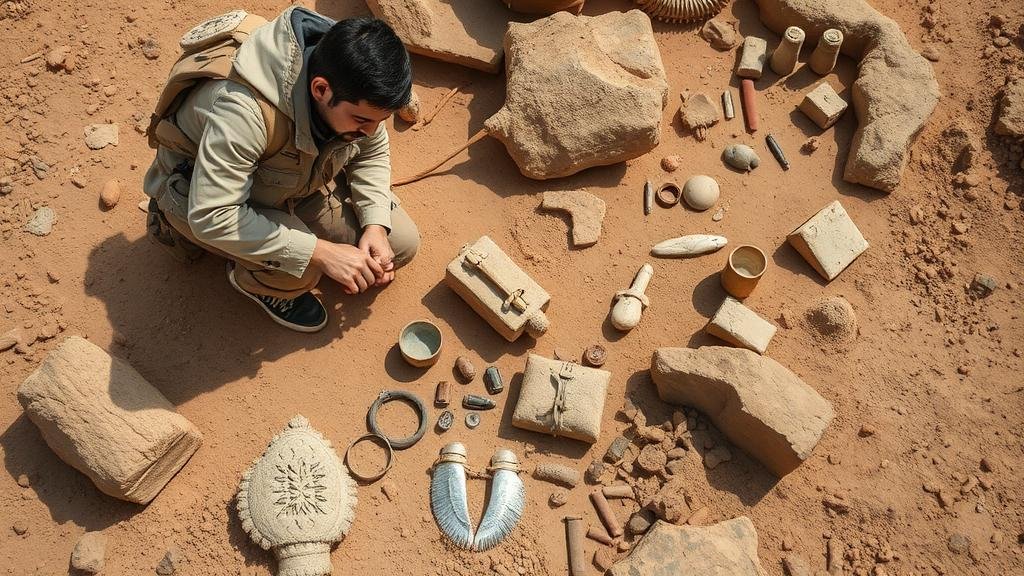How explorers authenticate artifacts discovered in remote archeological sites.
How Explorers Authenticate Artifacts Discovered in Remote Archaeological Sites
Archaeological discoveries often emerge from the shadows of history, yielding artifacts that provide invaluable insights into past civilizations. But, the authenticity of these artifacts can be a matter of great debate. This article delves into the various methods that explorers and archaeologists employ to authenticate artifacts found in remote archaeological sites, ensuring that history is accurately represented.
Visual Inspection and Documentation
The first step in the authentication process is visual inspection. Experienced archaeologists can often identify forgeries based on craftsmanship, markings, and overall condition of the artifact. For example, a team of archaeologists led by Dr. David Wengrow discovered a series of stone tools in the English Channel in 2019. Upon examining these tools, they were able to conclude that the craftsmanship was consistent with known Pleistocene tools, reinforcing their authenticity.
Documentation plays a crucial role during this phase. Explorers typically photograph the artifact from various angles and document its context, including the location of the find and the surrounding materials. This extensive documentation can serve as a baseline for further analysis.
Scientific Testing Methods
In the quest for authenticity, archaeological professionals resort to a range of scientific testing methods. e include:
- Radiocarbon Dating: This technique is used for organic materials, allowing researchers to date artifacts up to about 50,000 years old. For example, in 2021, radiocarbon dating of wooden artifacts found in an ancient shipwreck off the coast of Italy revealed they dated back to the 1st century AD.
- Thermoluminescence: This method determines when minerals were last heated or exposed to sunlight. A notable application occurred during the 2020 excavation of pottery shards in a Chinese archaeological site, where thermoluminescence analysis confirmed their ancient origins.
- Mass Spectrometry: This method allows for the analysis of the elemental composition of an artifact. In 2018, researchers utilized this method on bronze artifacts from the Zhou Dynasty to verify their metallurgical composition and affirm their age.
Provenance Research and Historical Context
Understanding the provenance, or the chronology of the ownership and location of an artifact, is key to verifying its authenticity. This involves researching the artifacts history, including previous owners, excavations, and even auction records. For example, in the case of the Ishtar Gate fragments housed in the Pergamon Museum in Berlin, extensive provenance research revealed their journey from Mesopotamia to Germany, highlighting their historical significance.
Providing a historical context for the artifacts is equally important. This means contextualizing the object within the culture and time period it is believed to originate from. For example, if an ancient Egyptian artifact is unearthed, it should align with known styles, materials, and techniques used during the reign of the specific pharaoh associated with that area and time.
Collaboration and Peer Review
Collaboration among archaeologists from different disciplines enhances the authentication process. By forming multidisciplinary teams, experts can cross-verify findings, which adds more layers of credibility to the authentication process. A noteworthy example is the collaboration between archaeologists and forensic scientists during the examination of the ancient city of Pompeii. By sharing expertise across fields, they successfully authenticated a range of artifacts and enhanced the understanding of life in Pompeii just before the catastrophic eruption of Mount Vesuvius in AD 79.
Also, peer review is a critical step in the research process. Once the initial findings and analyses are complete, they are often subjected to scrutiny from other experts in the field. This can lead to new insights or potential corrections, thereby solidifying or questioning the authenticity of the artifact.
Technological Advances in Authentication
Recent advances in technology have revolutionized artifact authentication. Techniques such as 3D scanning and digital imaging allow for detailed analysis without touching the artifacts, thereby preserving their condition. For example, in 2022, researchers used 3D scanning to digitally reproduce early medieval artifacts found in a burial site in England. This technique enabled them to study the artifacts features in intricate detail, aiding in authenticity verification.
Also, the use of artificial intelligence (AI) in pattern recognition is on the rise, helping authentication experts by quickly sorting through vast databases of known artifacts to identify potential fakes. This can drastically reduce the time taken to assess new finds.
Conclusion: Ensuring Historical Integrity
In the realm of archaeology, the authenticity of artifacts is paramount to preserving historical integrity. From rigorous scientific testing to collaborative efforts among specialists, each step enhances our understanding of the past. ongoing evolution of technology further empowers explorers in their quest to unveil the truth behind ancient artifacts.
As future archaeological endeavors continue to uncover new findings, the methods of authentication will undoubtedly advance, ensuring that our collective history remains intact and accurate. As enthusiasts and professionals alike engage with these artifacts, fostering an appreciation of our history becomes an essential journey for all.


